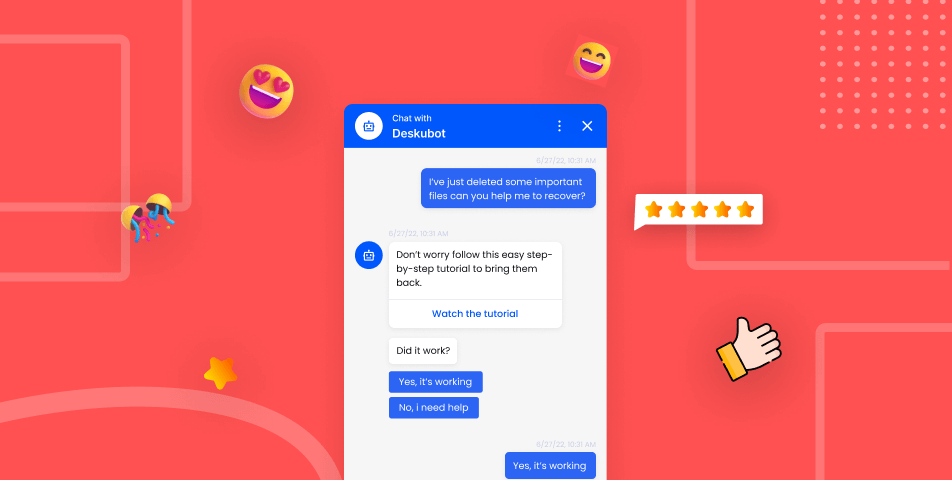Social media bots have transcended their role from mere novelties to indispensable tools in today’s digital ecosystem. These automated programs, designed to perform a wide array of tasks on social media platforms, mitigate the challenges of manual, time-consuming activities that humans might find repetitive or unfeasible.
From automating posts to engaging with users and analyzing trends, these bots leverage artificial intelligence (AI) and machine learning to mimic human interactions, process vast datasets, and execute functions with precision and efficiency. The development and operation of these bots tap into the advanced realms of AI and software engineering.
Creating a social media bot starts with identifying its purpose—be it for enhancing customer service, managing content, or gathering insights. The journey from concept to realization involves selecting suitable programming languages and tools, as well as utilizing platform-specific APIs (Application Programming Interfaces) for seamless integration with social media networks.
What is the Purpose of Social Media Bots
- Automating Posts: To schedule and post content automatically, thereby saving time and ensuring consistent online presence without constant manual intervention.
- Engaging with Users: To interact with users by answering questions, providing customer support, or initiating conversations, which helps enhance user engagement and satisfaction.
- Analyzing Trends: To monitor and analyze social media trends and user behavior, allowing for real-time insights into popular topics, sentiment analysis, and market trends.
- Enhancing Customer Service: By offering immediate responses to customer inquiries and support requests, thereby improving the customer experience and resolving issues promptly.
- Managing Content: To curate and manage content efficiently, including the aggregation of relevant content from various sources or the moderation of user-generated content.
- Gathering Insights: To collect and analyze data for insights into user preferences, engagement levels, and effectiveness of social media strategies, which can inform future marketing and content decisions.
- Lead Generation: Identifying and interacting with potential leads by engaging in conversations or directing them to resources or landing pages.
- Competitor Analysis: Monitoring competitors’ social media activities to gain insights into their strategies, performance, and audience engagement.
- Brand Monitoring: Tracking mentions of the brand across social media platforms to manage reputation and respond to feedback.
- Event Promotion: Automating the promotion of events, webinars, or product launches to maximize outreach and participation.
- Personalization: Delivering personalized content and recommendations to users based on their interactions and interests.
The Major Benefits of Social Media Bots
Chatbots for Customer Service:
Benefit: Provide 24/7 customer service on social media platforms, guiding customers through product-ordering processes and sales or answering simple questions.
Explanation: This ensures that customers receive immediate assistance at any time, improving the customer experience and potentially increasing sales and customer satisfaction.
Marketing Social Media Bots:
Benefit: Improve engagement and increase followers on social media platforms.
Explanation: By engaging with users and increasing interactions, bots help businesses build a stronger social media presence and enhance brand awareness, fostering community growth and loyalty.
Social Media Post Generators:
Benefit: Automatically create personalized posts for social media to increase brand visibility.
Explanation: These bots help maintain a consistent and relevant presence on social media, engaging audiences with content tailored to their interests and preferences.
Content Recommendations:
Benefit: Suggest relevant content, events, or products based on user activity and interests.
Explanation: By analyzing user behavior, bots can provide personalized recommendations, enhancing user engagement and discovery on social media platforms.
Customer Surveys:
Benefit: Automate the sending of customer surveys after interactions such as purchases or queries.
Explanation: This helps businesses gather feedback efficiently, allowing for continuous improvement based on customer insights.
Fraud Prevention:
Benefit: Detects fraudulent activity more effectively than humans.
Explanation: AI-based chatbots can analyze inconsistencies in user behavior, location, and voiceprints to prevent unauthorized access and transactions, enhancing security.
Data Security:
Benefit: Securely process and store personally identifiable information (PII).
Explanation: Bots reduce the risk of human error in handling sensitive data, ensuring compliance and protecting customer information.
Statistics:
Benefit: Collect and analyze vast amounts of user data and interactions.
Explanation: This enables businesses to monitor social media marketing progress, understand audience behavior, and tailor strategies for better engagement and results.
Recognition:
Benefit: Employ voice-recognition technology for superior user identification.
Explanation: This enhances security and user verification processes, surpassing human capabilities in accurately identifying and authenticating users on social media platforms.
Risks Associated with Social Media Bots
- Dissemination of Misinformation: Social media bots can disseminate misleading information, including fake news and conspiracy theories, or engage in spam, potentially tarnishing a business’s reputation and sowing confusion among users.
- Artificial Social Media Engagement: Bots are capable of inflating engagement metrics, such as likes, shares, and views on platforms like YouTube, creating a false perception of popularity or support.
- Social Media Manipulation for Perceived Influence: Bots can be utilized to artificially enhance the follower count of accounts, making individuals or organizations appear more influential than they are. These follower bots, often traded on illicit markets, skew the authenticity of social engagement. Influencer marketing is projected to reach $21.1 billion.
- Political Influence and Election Interference: Research indicates that a significant portion of political discourse on social media platforms can be attributed to bots, which were notably active during events like the 2016 US presidential election, potentially influencing public opinion and election outcomes.
- Financial Market Manipulation: These bots can affect financial markets by spreading manipulated news regarding corporations, aiming to influence stock prices either positively or negatively.
- Spam Distribution: Bots are frequently used to distribute spam, bombarding social media users with unsolicited advertising content and links.
- Suppression of Free Speech: In politically sensitive contexts, such as the Arab Spring, bots have been employed to drown out the voices of protestors and activists by overwhelming social media platforms with government-aligned messages.
- Proliferation of Fake Accounts: A significant percentage of social media accounts are operated by bots, a fact confirmed during testimonies to the US Congress, suggesting a widespread prevalence of non-human actors across social networks.
- Amplification of Online Harassment and Hate Speech: The ease with which social media bots can spread harmful content contributes to the challenges of managing online harassment and hate speech, exacerbating social divides and harming community wellbeing.
How Can Companies Take Advantage of Social Media Bots
Welcoming Visitors:
Use: Chatbots can automatically greet visitors on a company’s social media pages or website chat interfaces.
Benefit: This immediate interaction creates a positive first impression, making visitors feel acknowledged and supported from the moment they engage with the brand. It sets the tone for a friendly and responsive customer service experience.
Scheduling Appointments:
Use: Chatbots are programmed to manage appointments, allowing customers to book services directly through social media platforms or chat interfaces.
Benefit: This simplifies the booking process, making it more accessible and convenient for customers to schedule appointments at any time without human intervention, leading to increased bookings and customer satisfaction.
Providing Information:
Use: Companies can design chatbots to answer frequently asked questions regarding products, services, pricing, or store hours.
Benefit: This ensures that customers receive instant answers to their queries, reducing wait times and freeing up human customer service representatives to handle more complex issues. It also helps in building trust and transparency between the company and its customers.
Promoting Special Offers:
Use: Bots can be used to inform customers about ongoing promotions, special discounts, or exclusive deals.
Benefit: This direct marketing strategy can boost sales and customer engagement by delivering personalized offers to customers, encouraging them to make purchases or take advantage of special deals. It’s an effective way to increase the reach and Impact of promotional campaigns.
Guiding Purchases:
Use: Chatbots can assist customers through the buying process, offering product recommendations and helping them complete transactions.
Benefit: This personalized shopping assistance can improve the customer experience by making the purchase process smoother and more intuitive. It can lead to higher conversion rates, as customers feel supported and are more likely to complete purchases with the help of guided navigation.
Understanding How Social Media Bots Work
Social media bots function as automated software programs that operate within social media platforms, executing predefined tasks without requiring human intervention. Here’s a breakdown of how they work:
Automated Interactions:
Bots can be programmed to perform routine social media activities such as liking, sharing, commenting on posts, and even following other accounts. This automation can mimic human social media behavior to increase the visibility and engagement of specific content or accounts.
Marketing and Promotion:
For marketing purposes, bots can distribute promotional content across social media platforms efficiently. They can automate the sharing of product updates, special offers, or branded content to a wide audience, helping businesses expand their reach and engage potential customers.
Content Distribution:
News organizations and content creators use social media bots to automatically publish stories or posts from their websites onto their social media channels. This ensures timely updates and broadens the dissemination of their content to followers without manual posting.
Task Automation:
At their core, these bots run automated tasks set by their creators. This includes not only engaging with content but also posting updates, photos, or links directly to social media accounts. By using account credentials, bots can operate autonomously, simulating the account owner’s activity.
Engagement Enhancement:
By automating interactions such as likes and comments, bots aim to boost the engagement metrics of certain posts or profiles. This can create an appearance of higher popularity or activity, potentially attracting more organic interactions from real users.
What Impact Has Social Media Bots Made
Social media bots have made a significant impact on the digital landscape, influencing various aspects of online interaction, marketing, and information dissemination. Their effects range from beneficial to controversial, highlighting the complexity of automated interactions in social spaces. Here are key areas where these bots have made an impact:
Marketing and Brand Engagement:
Bots have revolutionized digital marketing strategies by allowing companies to engage with customers at scale. Automated responses, personalized messaging, and 24/7 customer service capabilities have enhanced customer experience, leading to increased brand loyalty and customer satisfaction.
Content Distribution:
Bots facilitate the widespread dissemination of content, enabling news organizations, influencers, and brands to automatically share updates, articles, and promotions. This has increased the reach and visibility of content, contributing to higher traffic and engagement.
Social Media Metrics:
The use of bots to like, comment on, and share posts has artificially inflated engagement metrics for some accounts. This can mislead about the popularity and influence of certain users or content, affecting how content is valued and perceived by real users.
Public Opinion and Political Discourse:
Bots have been used to manipulate public opinion and political discourse by spreading propaganda, misinformation, or amplifying specific viewpoints. This has raised concerns about the integrity of democratic processes and the authenticity of online discussions.
Customer Service and Interaction:
By automating customer service interactions, bots have significantly reduced response times and improved efficiency. This has allowed businesses to handle higher volumes of inquiries and provide timely assistance, improving the overall customer service experience.
Information Overload and Misinformation:
The proliferation of bots has contributed to information overload and the spread of misinformation. Automated accounts can quickly disseminate false or misleading information, complicating efforts to ensure the accuracy and reliability of online content.
Innovation in AI and Technology:
The development and implementation of social media bots have driven advancements in AI and machine learning technologies. The need for more sophisticated, context-aware bots that can understand and mimic human interactions has pushed forward research and innovation in natural language processing and behavioral algorithms.
Role and Impact of Social Media Bots on Twitter
On Twitter, bots play a complex role, wielding the power to both enhance and complicate the digital conversation landscape. They significantly impact engagement metrics, potentially misleading users and advertisers with artificially inflated likes, retweets, and followers while also rapidly spreading information—be it genuine updates or false news.
This duality extends to public discourse, where bots can shape opinions and influence political climates by amplifying specific narratives, sometimes even manipulating market sentiments or hijacking trending topics. Despite their capacity to improve user experience by providing timely information or customer support, the pervasive use of bots raises concerns over platform integrity and user trust.
Consequently, Twitter faces the ongoing challenge of balancing the utility of bots against the risks of misinformation, manipulation, and the erosion of genuine human interaction, highlighting the intricate dance between technological utility and ethical responsibility in the digital age.
Role and Impact of Social Media Bots on Instagram
When we talk about Instagram marketing, bots carry a dual-edged significance, streamlining engagement while simultaneously navigating ethical gray areas. They automate interactions—liking, commenting, and following—to artificially boost engagement and follower counts, offering brands and influencers a shortcut to perceived popularity and reach.
This automation can lead to increased visibility and potentially more genuine interactions as profiles appear more active and attractive to real users. However, the reliance on bots for such growth strategies can dilute the authenticity of connections, as the platform’s essence of genuine engagement and community building is overshadowed by mechanized interactions. Furthermore, Instagram’s algorithmic response to detect and penalize inauthentic behavior poses a risk to accounts utilizing bots, potentially affecting their visibility or leading to bans.
Despite these challenges, bots are also harnessed for beneficial purposes, like scheduling posts or providing customer service, showcasing the nuanced role they play in digital marketing strategies. Balancing their advantages against ethical considerations and platform guidelines is a delicate act for marketers aiming to leverage Instagram’s potential without compromising the authenticity valued by users.
Role and Impact of Social Media Bots on Youtube
On YouTube, bots significantly influence content visibility and user engagement, presenting both opportunities and challenges within the platform’s ecosystem. They can artificially inflate video views, likes, comments, and subscriber counts, potentially misleading content creators, advertisers, and viewers about the actual popularity and engagement of content.
This manipulation can skew the platform’s recommendation algorithms, leading to greater exposure for certain videos while diminishing the visibility of others, regardless of content quality or relevance. Consequently, this can impact content monetization, as advertisers may unknowingly invest in placements on artificially inflated channels.
Moreover, bots can also be used for spamming comments, promoting unrelated products, or spreading malicious links, which can detract from the user experience and harm the platform’s integrity. However, beyond these exploitative uses, bots play a constructive role in automating routine tasks for content creators, such as posting scheduled videos or managing repetitive comment moderation tasks, allowing for more efficient channel management.
Conclusion
Social media bots present a delicate balance between opportunity and challenge. Their responsible use demands leveraging their capabilities for beneficial outcomes and carefully navigating the potential risks involved. Whether it’s improving customer service or safeguarding the integrity of online spaces, bots hold the potential to bolster authenticity and engagement across social media platforms.
By judiciously harnessing their power, we can ensure that bots serve as tools that enrich our digital interactions rather than detract from them, fostering a more connected and genuine online community.
FAQs on Social Media Bots
Q. Is the use of social media bots considered illegal?
Social media bots automate tasks such as posting content, engaging with users, and analyzing data, enhancing efficiency and engagement.
Q. Is the use of social media bots considered illegal?
The legality of social media bots depends on their use; while bots used for spam or fraud can be illegal, those used for legitimate purposes like customer service are legal.
Q. How can one detect the presence of a bot on social media?
Bots can often be identified by their repetitive posting patterns, lack of personal information, or generic responses.
Q. Who is responsible for the operation of social media bots?
Social media bots are typically controlled by their creators, who can range from individuals and businesses to organizations for various purposes.







